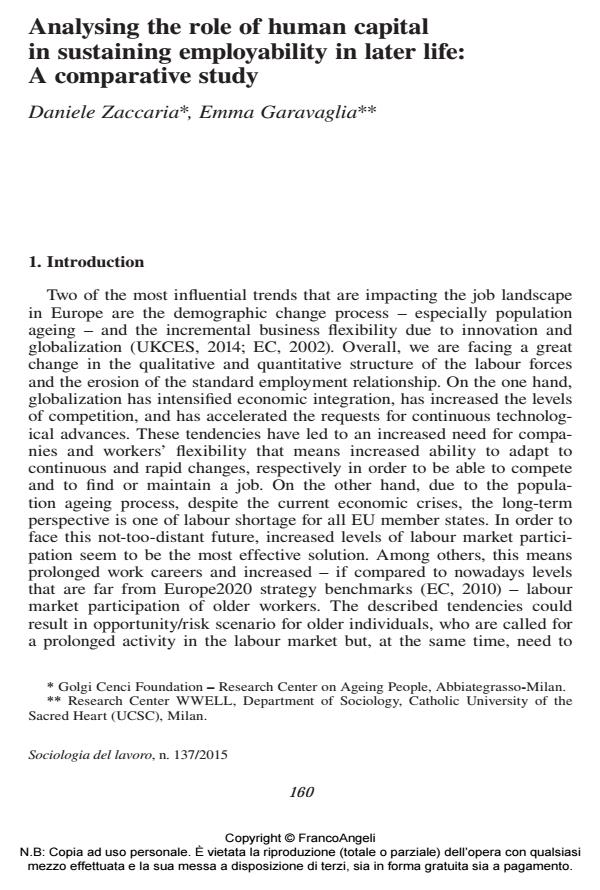Analysing the role of human capital in sustaining employability in later life: A comparative study
Journal title SOCIOLOGIA DEL LAVORO
Author/s Daniele Zaccaria, Emma Garavaglia
Publishing Year 2015 Issue 2015/137
Language English Pages 16 P. 160-175 File size 148 KB
DOI 10.3280/SL2015-137010
DOI is like a bar code for intellectual property: to have more infomation
click here
Below, you can see the article first page
If you want to buy this article in PDF format, you can do it, following the instructions to buy download credits

FrancoAngeli is member of Publishers International Linking Association, Inc (PILA), a not-for-profit association which run the CrossRef service enabling links to and from online scholarly content.
Daniele Zaccaria, Emma Garavaglia The combination of institutional variables defining different welfare and productive regimes lead to different degrees of inclusion of older workers in the labour market and to different degrees of protection of older workers from work-related risks deriving from the globalization process. Moreover, the institutional setting also influences the degree of significance that individual characteristics have in shaping employment biographies in later life. By adopting an institution and individual- centered approach, the paper analyses the most critical characteristics that sustain older workers’ employability and employment performance, from a cross-national perspective. In particular, it focuses on the role of human capital. Appling longitudinal models to SHARE data we estimate the effect of three different dimensions of human capital (educational level and informal training) on older workers’ employability and employment performance in different institutional contexts.
Keywords: Older workers, human capital, education, employability, job tenure, welfare regimes
Daniele Zaccaria, Emma Garavaglia, Analysing the role of human capital in sustaining employability in later life: A comparative study in "SOCIOLOGIA DEL LAVORO " 137/2015, pp 160-175, DOI: 10.3280/SL2015-137010